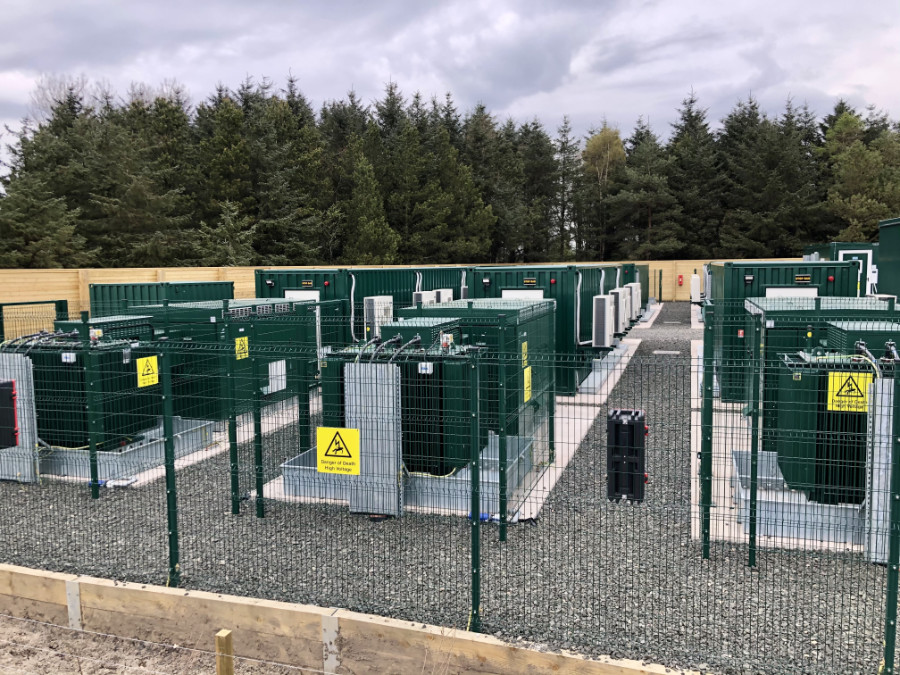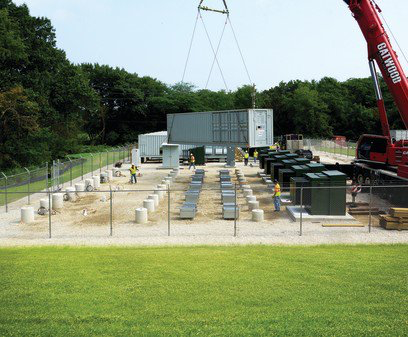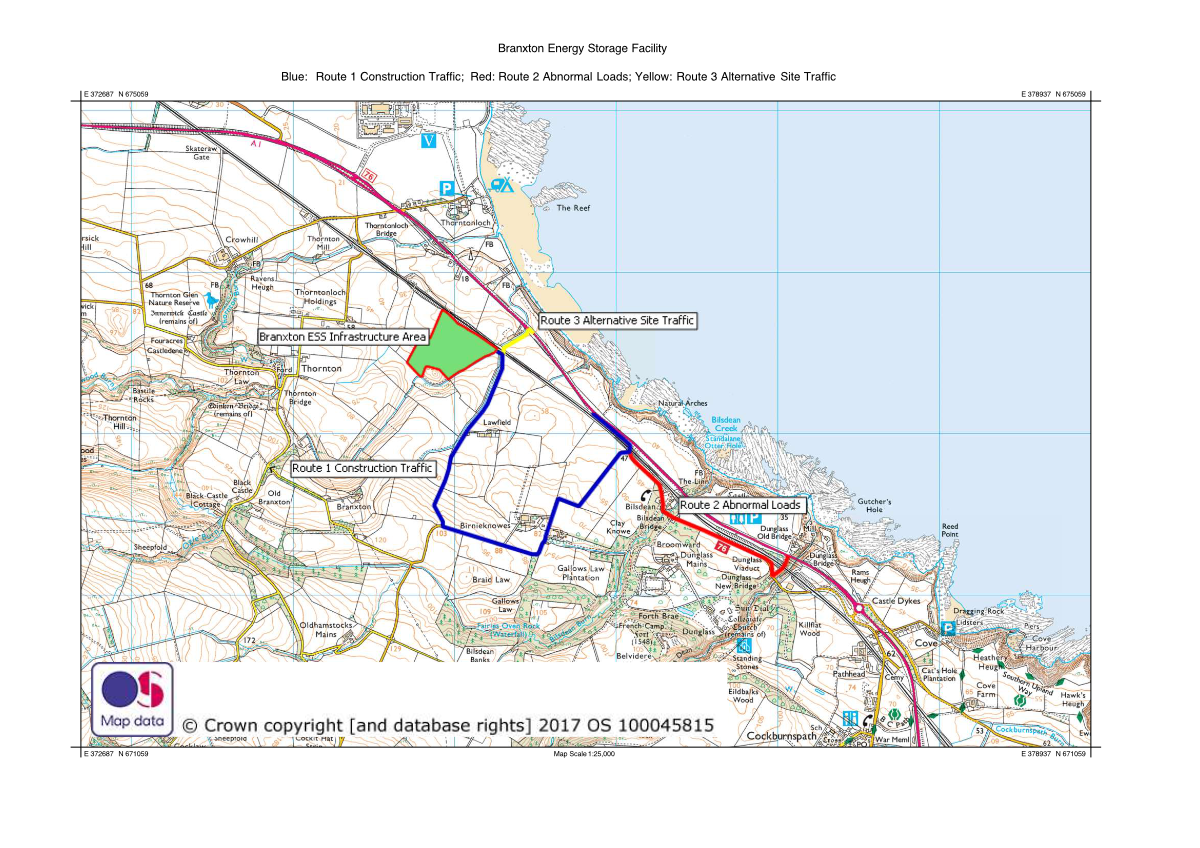Construction and Operations

Construction and Operations
The modular nature of battery storage technology means that construction of an energy storage facility can be a speedy process and it is anticipated that total construction time for the project will be around 12 months.
The battery container units themselves sit on shallow concrete plinths surrounded by permeable gravel drainage areas. There will be a separate enclosed high voltage area within the site operated by Scottish Power and due to the high voltage nature of the project equipment the entire site will be enclosed within a security fence which will be painted a natural green colour.

Landscape screening has been proposed in a strip following the outside perimeter of the security fence and it is expected that within a few years of operation this will have grown to almost entirely screen the fence.
The Branxton Energy Storage Facility connects via underground cable to the Scottish Power Branxton electricity substation which is scheduled to be constructed in 2026 to the southwest of Thornton Bridge. As a result, construction of the battery facility is not expected to start before 2026 and once necessary planning consent has been obtained.
Once operational, the Branxton Energy Storage Facility is unmanned and will require only weekly maintenance visits from the project engineers. The facility will be monitored by CCTV and will have motion-activated security lighting meaning that there is no normal nightime illumination at the site in operation.
Transportation
A comprehensive transportation management plan will be drawn up in consultation with East Lothian Council and local stakeholders and submitted for approval to the planning authority prior to any works commencing on the project.
Proposed transportation routes to site during the construction phase are shown on the plan below.
It is anticipated that around twelve abnormal transportation loads will be required to bring the grid transformers onto the project site from the nearby A1. These will initially travel via the abnormal loads route 2 shown on the plan above and then will join route 1 for the final leg. General construction traffic will follow either route 1 or route 3 shown depending on nature of the transport and approach direction from the A1.
Vehicle type and routing will be examined as equipment delivery and construction schedules are refined going forward with the aim of minimising disruption on the local road network.
Reinstatement
At the end of the construction period, land areas on the project site which have been used as temporary laydown areas for equipment will be reinstated and those outside the perimeter fence will return to agricultural usage. The anticipated project life is up to 40 years and at the end of the project all infrastructure will be removed from site and passed through suitable recycling channels and the land returned to agricultural activity.

